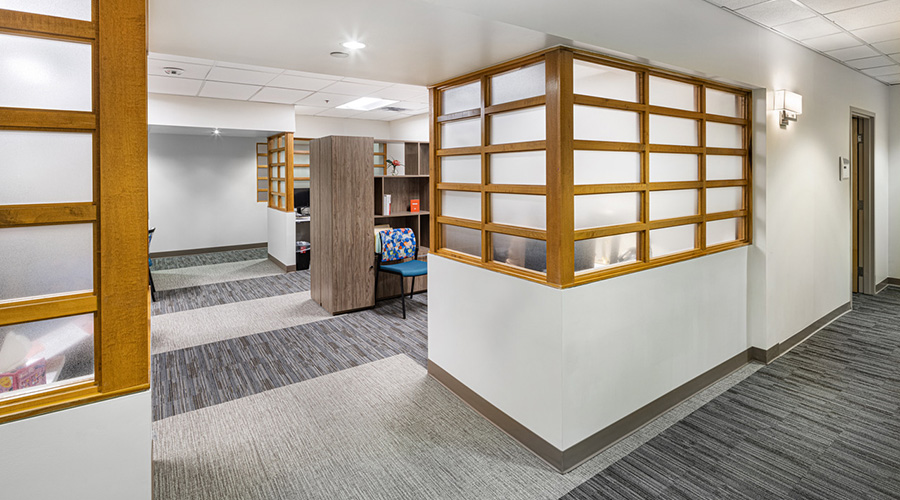In today's rapidly evolving healthcare landscape, healthcare facilities managers face many complex leadership challenges that demand strategic foresight, adaptability and effective management skills.
From technological advances and staffing dynamics to intricate project management, managers must navigate obstacles to ensure efficient operations and high-quality patient care. Here are practical strategies managers can implement when facing six pressing issues.
1. Technology on the move
The healthcare industry is witnessing a relentless pace of technological innovation, particularly in medical imaging equipment, such as MRIs and CT scanners. While these advances offer unprecedented diagnostic and treatment capabilities, they also present unique challenges for managers.
One primary concern is the rapid obsolescence of medical technology. By the time a new facility is constructed or renovated, the equipment specifications used during the design phase already might need to be updated.
This necessitates a proactive and flexible approach to infrastructure planning, ensuring facilities can accommodate future upgrades and modifications without significant disruptions or costly overhauls.
To address the issue of rapid technological obsolescence, managers can establish robust communication channels with equipment vendors. This tactic allows them to anticipate changes and design infrastructure with allowances for future technological upgrades and modifications.
For instance, creating zones for various systems can help manage space efficiently, particularly in ceiling layouts where multiple systems such as ductwork, cable trays, electrical and plumbing need to coexist.
Involving facilities technicians who specialize in key areas such as mechanical, electrical, plumbing, and medical gas also is crucial. Understanding each piece of equipment and its requirements ensures the infrastructure can accommodate future upgrades without significant disruptions.
Besides addressing technological infrastructure and accommodating complex equipment, managers should consider specific design elements that can enhance the functionality and efficiency of healthcare facilities. These facilities house vulnerable patients, and building exterior is the first line of defense from the elements. This view underscores the importance of exterior envelope assemblies, and they should not be considered when value engineering.
For instance, using radiant heat panels, which warm surfaces rather than blowing warm air, can provide a more comfortable environment for patients and staff and provide better thermal properties to window assemblies. The use of curtain wall systems instead of storefront systems also can contribute to better condensation mitigation and energy efficiency.
2. Project complexity
Healthcare facility renovations and expansions are inherently complex, involving multiple construction phases while maintaining operational continuity. Effective project management practices are essential to navigate these challenges successfully.
Healthcare leaders can employ detailed planning and scheduling tools, such as spreadsheets, to track tasks, deadlines and deliverables. Regular meetings with all stakeholders, including owners, architects and contractors, ensure clear communication and coordination. This collaborative approach helps identify potential issues early and develop solutions proactively.
A phased approach to construction could be vital to minimize disruptions to ongoing operations. But phased construction also could add unnecessary cost and lead-times to a project. Facilities managers should discuss each approach at the beginning of a project to understand the benefits and challenges and to ensure that each project is completed efficiently.
For example, when renovating an existing facility to blend with new bed towers, managers can consider the best way to move and shift departments, such as labs and imaging, into the new facility. This process requires meticulous planning and coordination to maintain operational continuity and ensure life safety compliance.
3. Move management and life safety
Move management is one of the most challenging aspects of healthcare facility projects. It involves coordinating the movement of departments and services while ensuring that life safety plans are in place.
For example, if an exit is blocked due to construction, the architect must collaborate with local authorities and managers to provide an approved alternative route for egress.
This process requires a detailed understanding of the owner's movement system and the construction phases, especially if mechanical, electrical, plumbing and medical gas systems run through spaces to be renovated.
Effective move management and phasing also involves creating an interim life safety plan with separate building fire safety numbers for each phase for proper review and inspection by the building official or authority having jurisdiction. This step ensures all safety measures are documented and approved, minimizing risks during construction.
4. Knowledge transfer and staffing
Staffing challenges remain a significant issue for managers. Finding experienced and knowledgeable employees is increasingly challenging, especially as many seasoned professionals from the Baby Boomer generation retire.
The Gen X talent pool is limited because many have transitioned to different professions during and after the recession and pandemic. They also might be approaching retirement. While millennials and Gen Z are more plentiful, they must continue to gain the experience and exposure to bring them to a senior level role.
At the same time, younger staff might have different priorities, such as a stronger emphasis on work-life harmony. Managers need to invest in training and mentorship programs for younger employees to address staffing challenges.
This tactic helps bridge the gap between generations and ensures the knowledge and experience of seasoned professionals transfer to the next generation. Mentoring new employees also fosters a culture of continuous learning and improvement, which is essential for maintaining high standards of patient care and operational efficiency.
5. Work-life harmony
Understanding and accommodating the work-life harmony that younger employees often seek is crucial to the schedule and deadlines of a project. This process might involve adopting more flexible work schedules and creating a supportive work environment that encourages collaboration and teamwork.
By embracing these changes, managers can attract and retain talented employees committed to the organization's goals and values.
6. Commit to the four Cs
Successful navigation of the challenges in modern healthcare leadership requires a commitment to the four Cs: communication, collaboration, caring and common goal.
Open communication with all team members, including owners, architects, contractors and equipment vendors, is essential for anticipating changes and developing effective solutions.
Collaboration fosters a team-oriented approach in which ideas are shared and considered, regardless of seniority or experience. This approach enhances the move management and construction phases.
Caring about the project involves professionalism beyond the initial excitement of launching it and demonstrating that commitment throughout its duration. This practice includes mentoring younger staff and dedicating effort to creating a healthcare space that promotes wellness for caregivers, patients, families and community members.
The common goal is for all stakeholders on the project team — from hospital and facilities staff to vendors, consultants and the construction manager — to collaborate in completing the building and ensuring its soundness from the exterior to the interior. This team effort aims to create a healing space for the benefit of the project and the people who will use the building.
Healthcare facilities managers face a complex and rapidly evolving landscape marked by technological advancements, staffing challenges and intricate project management requirements.
By adopting proactive and flexible approaches to technology planning, detailed project management practices and effective move management strategies, managers can navigate these challenges successfully. Investing in training and mentorship programs for younger employees and embracing their work-life harmony priorities are crucial steps to addressing staffing challenges.
Ultimately, a commitment to communication, collaboration, caring and common goals ensures the creation of resilient and adaptable healthcare infrastructures that meet the evolving needs of patients and healthcare professionals.
By prioritizing these strategies, healthcare managers can successfully navigate key challenges of healthcare leadership to create state-of-the-art facilities that serve the community effectively and stand the test of time.
Amanda L. Gorning, AIA, LEED AP, NCARB, is healthcare studio leader and principal with Albert Kahn Associates, an architecture, design and engineering firm.

 Ribbon Cutting Marks First Phase Completion for New Montefiore Einstein Facility
Ribbon Cutting Marks First Phase Completion for New Montefiore Einstein Facility Brooks Rehabilitation Launches 3 New Major Construction Projects
Brooks Rehabilitation Launches 3 New Major Construction Projects Joint Commission Standards: What Updates Matter Most?
Joint Commission Standards: What Updates Matter Most? Swinerton Completes Construction at Atlanta's Grady Hospital
Swinerton Completes Construction at Atlanta's Grady Hospital NY Governor Hochul Announces $300M in Funds for IT and Cybersecurity
NY Governor Hochul Announces $300M in Funds for IT and Cybersecurity